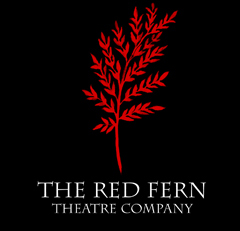| About Us
The Red Fern Theatre Company (RFTC), founded by Emilie E. Miller and Melanie Moyer Williams in March 2006, strives to provoke social awareness and change through theatrical productions and outreach. We are dedicated to fostering the development of new work by both established artists and those just beginning. Each play produced by the Red Fern Theatre Company addresses social issues that range in scope from local to global, and each production is paired with a philanthropy whose work relates to the social themes of the play. A portion of the proceeds from each play produced is donated to the designated philanthropy. We also provide our audiences with information on the philanthropy both by introducing their mission at each performance and including information about them in the play’s program. By associating each production with a philanthropic organization, we are able to respond directly to the people actually affected by the issues addressed in the play.
In May 2006, THE RED FERN THEATRE COMPANY opened its first production – PATIENT A by Lee Blessing. Since then , Red Fern has produced the revivals of ten plays, three New York premieres, five World Premieres, the World premiere of four evenings of commissioned short plays, and countless staged readings. Four of our productions have led to publication by major theatrical publishers, and our productions have been nominated for both the AUDELCO awards and the New York Innovative Theater Awards. To date, we have partnered with 20 philanthropic organizations. We are also committed to being a diverse group of artists.
We are now a resident company at the Theater at the 14th Street Y located at 344 East 14th Street between 1st/2nd Avenue. We are excited to be a part of the thriving artist community in the lower east side. We have helped to create a “green theatre” initiative gathering many of our materials from Materials for the Arts. Those items purchased (including raw materials) are either recycled to other artists or donated to Materials for the Arts for continue use following the close of a production.
New York is home to thousands of theatre companies; many of them are committed to socially conscious plays. The Red Fern Theatre Company distinguishes itself by bridging the gap between the theatre we produce and the change it seeks to create. In its partnerships with philanthropies, the RFTC provides the vehicle with which our audiences can give back to their community.
Why the name "Red Fern"?
The catalyst for beginning the RFTC came when Melanie found Tennessee Williams' first show "Candles to the Sun." She had many friends including Emilie read it, and Emilie immediately felt the same connection to the play's message as Melanie had. They set out to produce the show but could not obtain rights. In preparing for this production, Melanie and Emilie discovered that they both had similar objectives in theatre, and they decided to choose another play to produce. Although they had to postpone their production of "Candles to the Sun," Emilie and Melanie decided to pay homage to two of Williams' progressive characters from this play by naming their theatre company after them. The character of Birmingham Red rallied coal miners to fight for a union with better working conditions and wages. One of Williams' strong female characters, Fern is a mother who saved every penny she could often sacrificing food and clothing for herself to send her son to the university. Fern knew that an education would mean her son would not be forced to work in the coal mines like every generation before him. Tennessee Williams chose her name because the fern is a plant that thrives in dark places, but is always reaching for the light. The Red Fern Theatre Company's goal is to make their audiences aware of social injustices as Birmingham Red did, while at the same time to provide their audiences with an opportunity to be involved with a philanthropy which will bring light to those adversely affected just as the character Fern was able to accomplish. |


